The Connectivity Benefits of Rapid Deploy for Ports
The Connectivity Benefits of Rapid Deploy for Ports
Marine port environments need strong, consistent wireless connectivity to power their day-to-day operations.
Unfortunately, that urgent need is why so many terminal operators are frustrated with their current network infrastructure. Whether they’ve tried LTE, private LTE, or other Wi-Fi implementations, many of these environments have been forced to rely on wireless connectivity solutions that impose stark limitations on day-to-day operations.
After getting burned with ineffective Wi-Fi implementations in the past, many marine terminals have concluded that LTE and private LTE are the best available solution to their connectivity issues.
That’s why we’re eager to spread the word about our Rapid Deploy family of products, including Rapid Sky, which deliver wired and wireless connectivity customized to your terminal’s specific geography and unique connectivity requirements.
“If you need to set up an office space within your facility, for example, our infrastructure can provide gigabit connectivity almost anywhere, and at a minimal cost. In contrast, cellular solutions are restrictive: you’re limited by modem options, the expense of adding new SIM cards, and the inability to deliver comparable bandwidth or capacity. Our solution is not only more agile but also offers far greater capability and flexibility.”
James Crooks, Senior Solutions Architect at Buckeye Mountain
Read on to learn more about the connectivity challenges faced by today’s marine ports—and how Buckeye Mountain’s Rapid Deploy products can deliver a positive impact for your port operations.
The Current Options for Wi-Fi Connectivity in Ports
In recent years, marine terminals have made significant investments into mobile technologies that improve communication and streamline operations across the port.
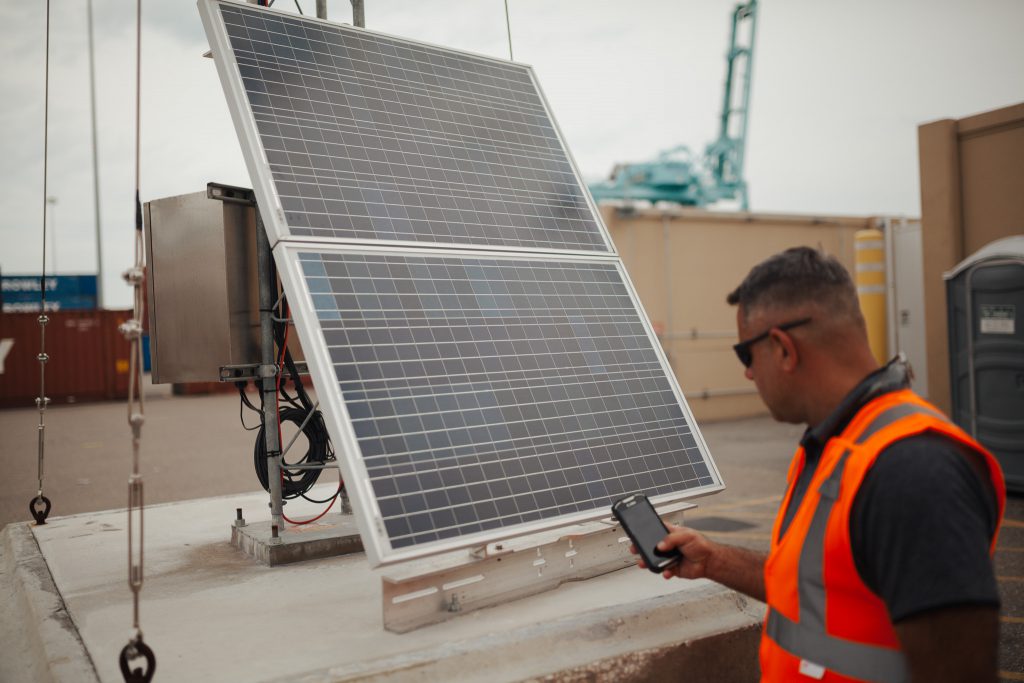
Tablet devices and other Wi-Fi enabled terminal hardware now play an integral role in almost every aspect of field operations—which means your entire terminal ops footprint can now be disrupted by connectivity issues.
“If the users who are on the ground can’t effectively communicate with an application that’s moving data or transactions, for example, it puts a port dead in the water until we get the issue resolved,” says Crooks.
Regardless of whether marine terminals are reliant on LTE or existing Wi-Fi infrastructure to deliver wireless connectivity, they’re likely dealing with these issues on a constant basis. Each takes a different approach to delivering port connectivity—but the end result is often the same.
LTE carriers
Both LTE and private LTE carriers deliver wireless connectivity using the same network infrastructure used for wireless consumers. Many marine terminals have been using LTE carriers for years because of its accessibility and ease of deployment: unlike Wi-Fi solutions, LTE doesn’t require any equipment installation, and it can still offer decent speeds and connectivity relative to other options.
The limitations of LTE come into play when relying on this technology to support mission-critical operations. The bandwidth limitations of LTE often can’t meet the throughput requirements of a large marine terminal. Large uploads and data transfers can be slow to execute through an LTE carrier—and these delays can create or exacerbate operational inefficiencies that wireless connectivity was meant to address.
There’s also the issue of signal availability in a port environment with tall stacks of shipping containers. If wireless devices are in a position where cellular signals are blocked by containers or other obstacles, wireless connections may be impeded or lost.
Wi-Fi
Compared to the bandwidth limitations of LTE, Wi-Fi’s greatest strength is its ability to deliver excellent bandwidth, throughput, and availability in a port environment. Unlike LTE and private LTE, where ports are dependent on shared infrastructure they don’t own or control, Wi-Fi infrastructure is exclusively owned by your property.
“That’s the beauty of Wi-Fi: you control that space, you control that connection, and you’re able to pivot when you see constraints and connectivity issues,” says Crooks. “You can’t do that with LTE or other technologies. You’re pretty much reliant on them to provide the service.”
James Crooks, Senior Solutions Architect at Buckeye Mountain
But conventional Wi-Fi infrastructure comes with critical disadvantages that limit the inherent flexibility of this technology. Along with the prohibitive cost of installing the necessary infrastructure, for example, access points are installed at fixed locations. This makes it difficult for Wi-Fi connectivity to adapt to dynamic outdoor environments.
With our Rapid Deploy family of products, we’ve created a new approach to wireless infrastructure that gives marine terminals the best of both worlds: high-speed, high-throughput Wi-Fi that minimizes installation costs and maximizes connectivity across your terminal. This is backed up by a high speed, exceptionally reliable fiber in the air backhaul that removes the need to implement physical fiber throughout your terminal.
Rapid Deploy for Ports: A Reliable Solution for Terminal Connectivity
Rapid Deploy is an established solution in leading wireless connectivity for rail and intermodal terminals. The operational advantages of this technology translates seamlessly to port environments—and it could be exactly what your terminal or property needs to elevate the performance of your marine yard operations.
What is Rapid Deploy?
Rapid Deploy is Buckeye Mountain’s patented approach to deploying consistent, scalable Wi-Fi infrastructure in even the most challenging outdoor environments using ultramodern technology.
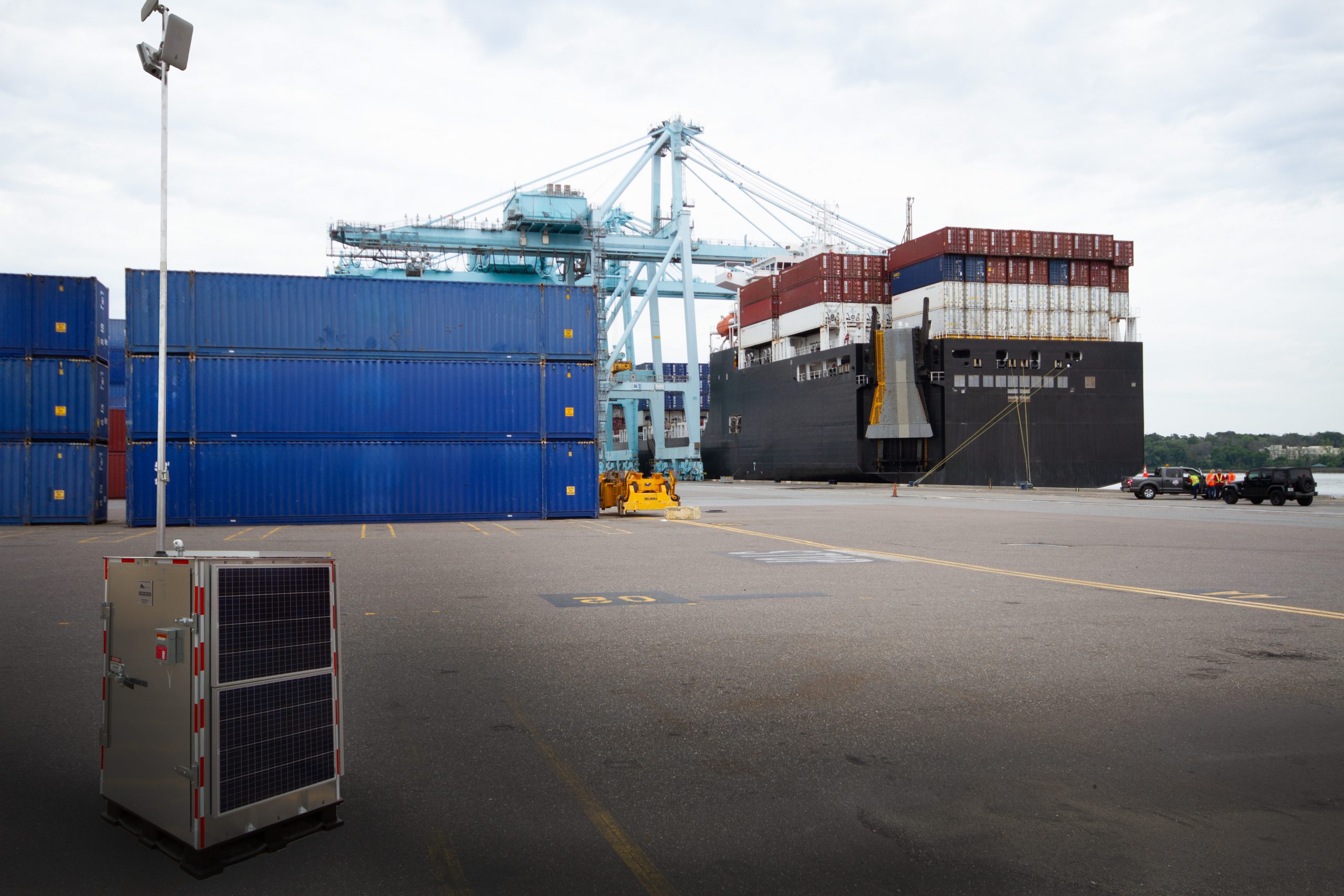
A cornerstone of Buckeye Mountains Rapid Deploy suite of products is the development and deployment of not only wireless design, implementation, industry leading monitoring and management services. Our key focus on providing guaranteed connectivity for our customers made us also look at providing power solutions to all our products including options for solar powered install points and battery backup systems that far exceed typical providers capability.
Our Rapid Deploy family of products features a wide range of standalone solutions to meet the connectivity needs of any outdoor environment. From high-mast towers to portable connectivity in remote and emergency scenarios, our autonomous solutions can be unified in a comprehensive Wi-Fi infrastructure that is configured to your property’s specific needs.
The Buckeye pledge to our customers also includes our above and beyond style of network monitoring and maintenance. Our Rapid Deploy networks are monitored and maintained by trained professionals 24 hours a day, 7 days a week. Often, we can alert our customers of anomalies or potential problems before they are aware of them from an operational perspective. The key to our success has always been the ability to proactively act to minimize downtime to your operations.
“Our solutions are tailored to each customer’s unique environment,” says Crooks. “We’re not an off-the-shelf company. We conduct on-site physical and RF surveys to ensure that our network designs are customized to the specific geographic location and the customer’s needs. This approach ensures that their investment is optimized, rather than relying on a one-size-fits-all solution.”
Buckeye’s Suite of Rapid Deploy Products
To meet individual environmental requirements, Buckeye Mountain often deploys a mix of Rapid Deploy solutions tailored to the customers’ needs. Our solutions most applicable to port environments include the following:
RapidSky
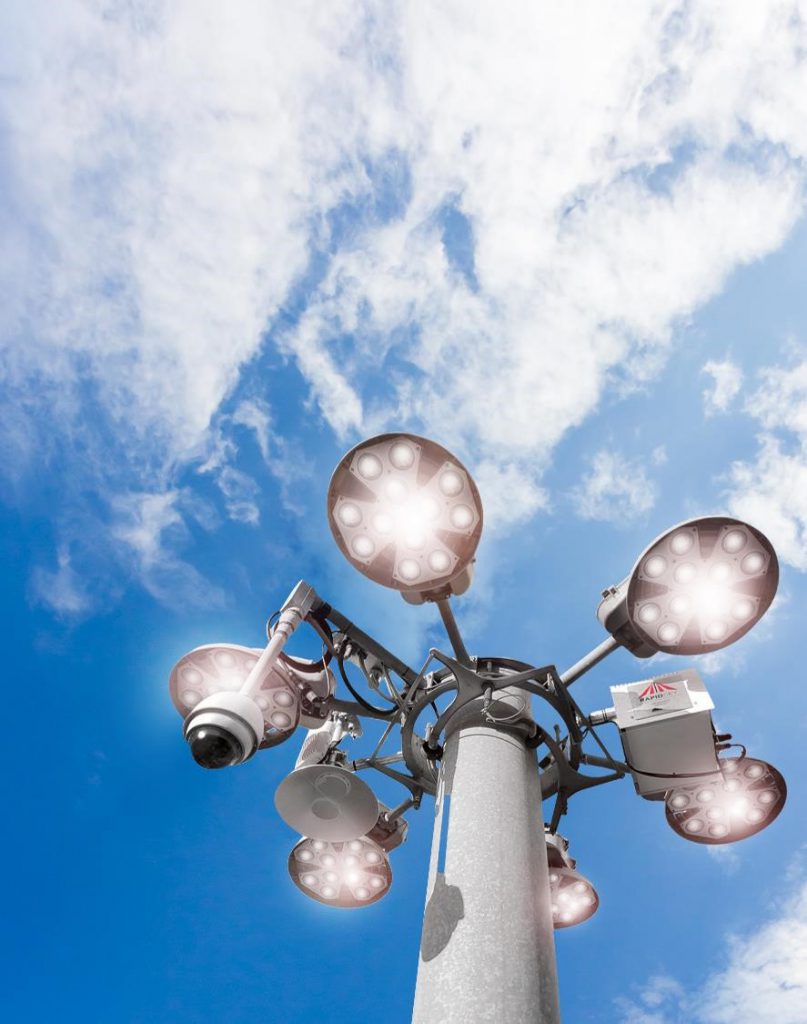
Developed specifically for the unique demands of marine terminal environments, RapidSky delivers Wi-Fi connectivity from light rings, or existing high-mast lights, mounted 100 feet in the air. By installing an access point high above container stacks in your yard, RapidSky’ s unique antenna design ensures reliable Wi-Fi coverage that overcomes the risk of stack interference in a dynamic environment. Coupled with our approach to use a high speed backhaul to provide a multi-gigabit fiber in the air backbone that translates into added reliability and performance.
RapidSky can be deployed alongside other Wi-Fi connectivity solutions to ensure that every square foot of your terminal enjoys consistent Wi-Fi access, reducing the risk of operational disruptions due to signal loss.
RapidOne
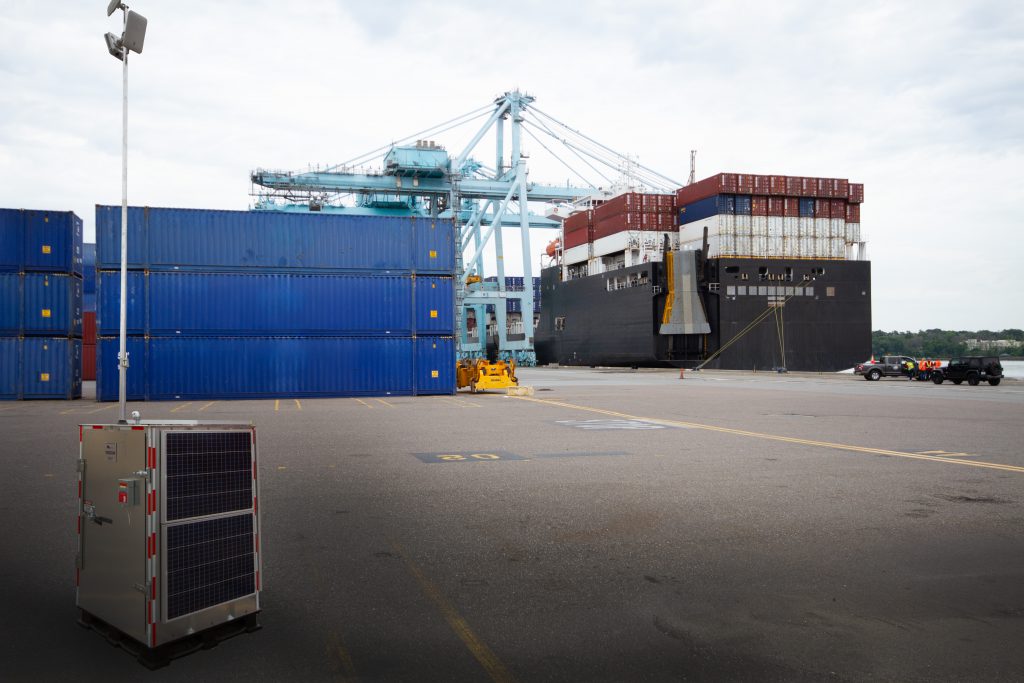
RapidOne provides fully standalone wireless connectivity through an attached 21-foot mast. Since these solutions are solar-powered and self-contained, they can be quickly deployed and moved in a matter of minutes or days and can be set up in difficult environments featuring gravel, uneven terrain, and exposure to extreme temperatures.
RapidMiniMax
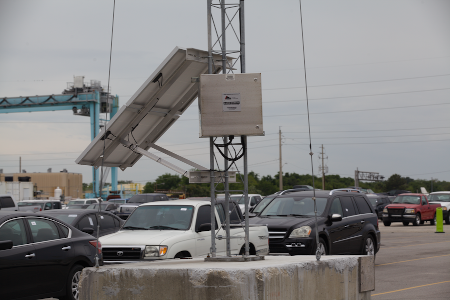
In ports where existing poles, towers, and other structures and surfaces are available, RapidMiniMax can be installed to turn these vertical assets into parts of your Wi-Fi infrastructure.
RapidMiniMax, which was originally deployed for port customers, can run on AC power or solar. It can be quickly deployed to improve wireless connectivity in your yard.
RapidFixed
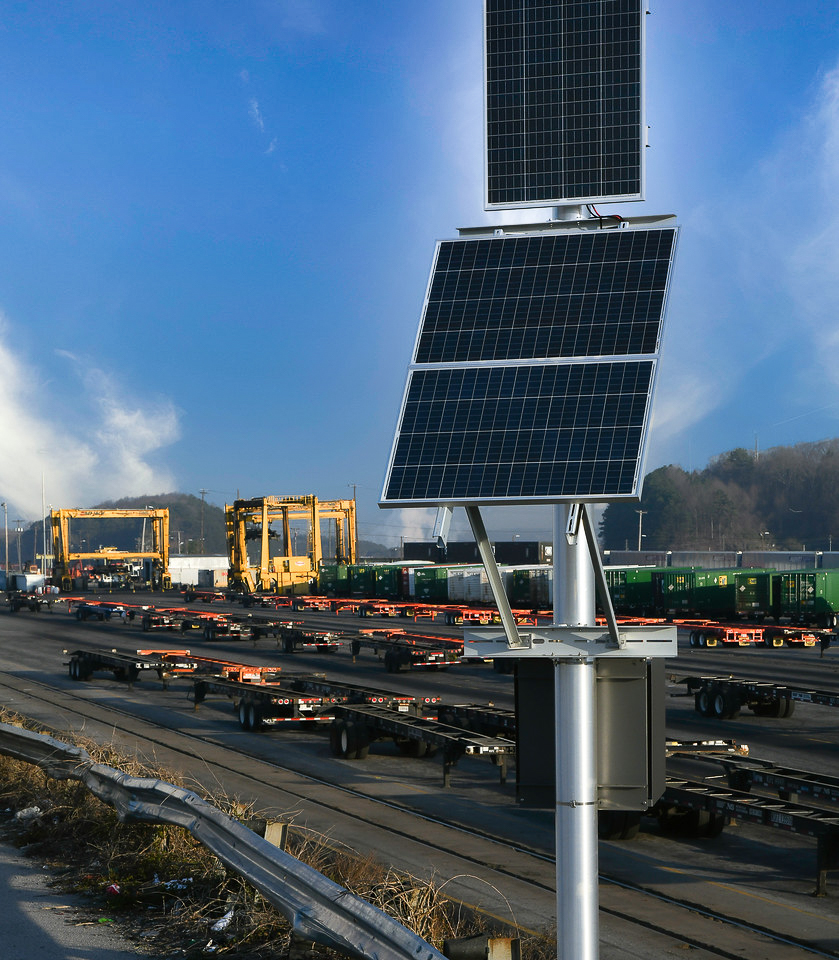
For port environments seeking permanent wireless infrastructure with minimal installation costs, RapidFixed is a scalable, cost-efficient connectivity solution designed specifically for dynamic terminal environments.
Originally deployed for our port customers, RapidFixed drills a single augured hole into the ground to install mix-mounted access points up to 35 feet off the ground—improving Wi-Fi access even among stacked intermodal containers.
How to get Started with Rapid Deploy
When a marine terminal is interested in using Rapid Deploy solutions for its wireless infrastructure, Buckeye Mountain’s experts have a streamlined, tried-and-tested approach to planning, designing, and testing each custom network before sending it out for deployment.
That process consists of the following stages:
- We use customer conversations to understand their unique needs and goals for deploying wireless infrastructure in their environment. These priorities guide our in-house design and build of the wireless network using whichever Rapid Deploy products are best suited to facilitating fast, consistent Wi-Fi coverage in the marine yard.
- Once the network is built, we bring in a team of engineers to configure, stage, and thoroughly test the infrastructure. This testing period, which can range from one week to one month, allows all of the networking hardware to “burn-in,” giving engineers a chance to identify any hardware defects that may create connectivity issues when placed under the strain of an outdoor terminal environment.
- After the burn-in period, we conduct a final round of testing to ensure that all solutions are in proper working order.
- We carefully break down the networking setup, package it securely to prevent any damage during transit, and ship the solutions out to the terminal site where our boots-on-the-ground team members can ensure a smooth deployment.
The Buckeye Mountain Difference: World-Class Support and a Design-First Approach
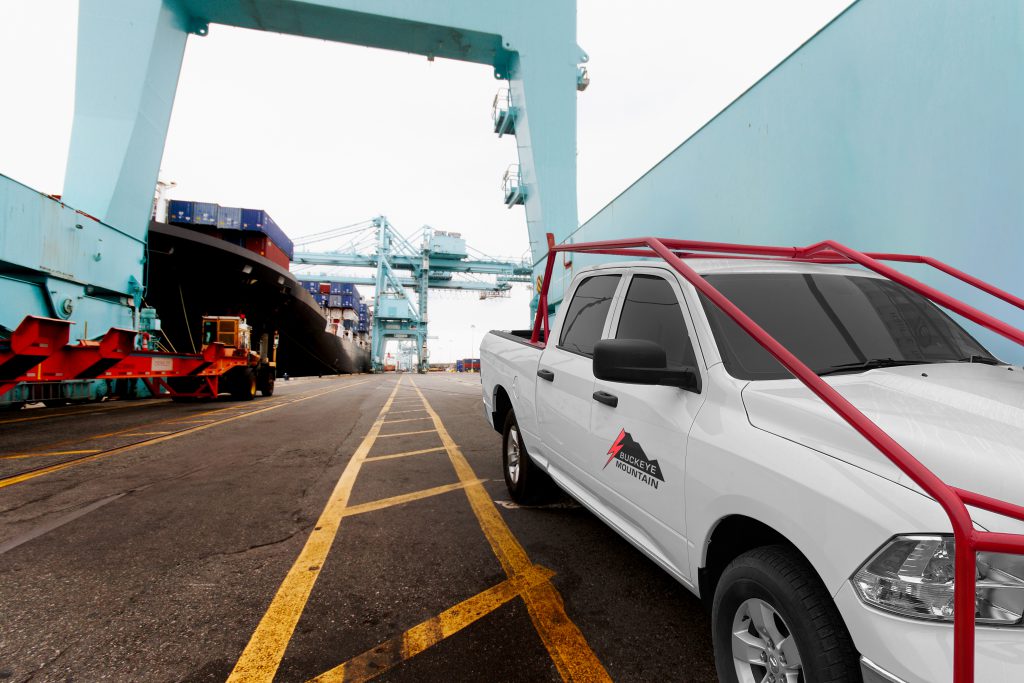
The value of working with Buckeye doesn’t stop with our Rapid Deploy family of products. Just as great wireless connectivity depends on a solid infrastructure, our Wi-Fi network deployments are backed by a responsive, supportive customer experience.
When you’re a Buckeye Mountain customer, you’re never on your own. From remote support to boots-on-the-ground assistance, we’re a partner in your operational success.
“One advantage of Buckeye is that we’re small enough to dedicate resources where they’re needed most, yet large enough to have those resources distributed and ready to deploy quickly,” says Crooks.
Meanwhile, our proactive mentality for designing solutions ensures that your networking technology can maximize its long-term value to your organization.
“The more proactive monitoring and maintenance you perform, the less you need to rely on being completely reactive,” says Crooks. “This principle is central to our support team’s approach. They are trained to focus on proactive measures to identify and address potential issues before they escalate and disrupt operations.”
James Crooks, Senior Solutions Architect at Buckeye Mountain
Unlock New Efficiencies Across your Rail Yard Operations
Poor connectivity is a drain on your day-to-day operations, leading to more stoppages, disruptions, frustration, and less revenue for your terminal.
The status quo is no longer acceptable. With our Rapid Deploy family of products, Buckeye Mountain can deliver fast, flexible, and scalable wireless infrastructure that benefits every facet of your day-to-day operations.
And, with Buckeye Mountain’s expert support, you can enjoy peace of mind knowing your networking system will be perfectly configured for your environment.

